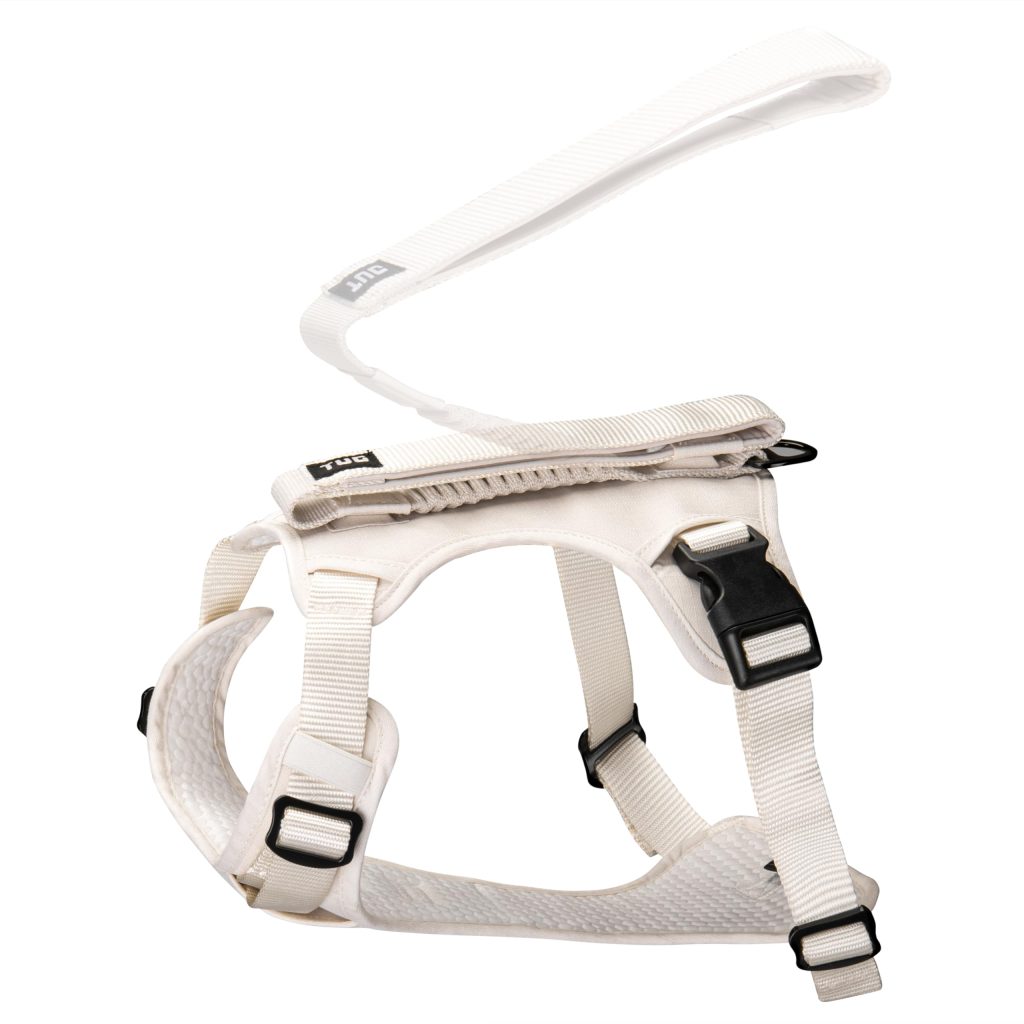Canine Heart Health – Signs and Strategies for a Healthy Heart

The intricate design of a canine’s heart plays a pivotal role in the overall health and vitality of our four-legged companions. Situated amid the thoracic cavity, this muscular organ resembles a dual pump working ceaselessly to circulate oxygen-rich blood throughout the dog’s body while simultaneously removing carbon dioxide and other metabolic wastes. Comprised of four chambers—two atria and two ventricles—the canine heart operates with a remarkable efficiency this is essential for sustaining life.
Beginning with the right atrium, blood returning from the body enters this chamber, subsequently flowing into the right ventricle. The right ventricle is then responsible for pumping this deoxygenated blood to the lungs, where it acquires oxygen before returning to the left atrium. From there, the left ventricle, being the most powerful of the four chambers, propels the oxygenated blood out into the systemic circulation, nourishing every organ and tissue. The heart’s rhythmic contractions are regulated by the sinoatrial (SA) node, a natural pacemaker that ensures a consistent heartbeat—a feature integral to a dog’s energy levels and general disposition.
Understanding canine heart anatomy is not merely an academic endeavor; it serves as a vital foundation for recognizing the various health challenges dogs may encounter. Heart disease in dogs is often insidious, manifesting in subtle changes that may evade even the most vigilant pet owners. Despite their robustness, specific breeds are predisposed to heart conditions, ranging from congenital defects to acquired diseases influenced by age or lifestyle. For example, Cavalier King Charles Spaniels are notably susceptible to mitral valve disease, while larger breeds like Doberman Pinschers face risks associated with dilated cardiomyopathy.
Furthermore, the impact of systemic conditions on cardiac function cannot be overstated; ailments such as obesity, diabetes, and hypothyroidism can have deleterious effects on a dog’s heart health. Indeed, the heart’s ability to effectively channel blood depends not only on its structural integrity but also on the nutrient status and overall health of the dog. This intricate interdependence necessitates a holistic approach to canine care that encompasses diet, exercise, and regular veterinary checkups.
To reinforce the functionality of the heart, proactive measures become essential. For instance, a well-rounded diet that includes essential fatty acids, antioxidants, and appropriate protein sources significantly contributes to cardiovascular health. Engaging in regular physical activity not only strengthens the heart muscle but also facilitates healthy weight management, diminishing the likelihood of heart disease. Many veterinarians suggest incorporating aerobic exercises, such as walking, running, or swimming, tailored to the dog’s age and breed. As with any health intervention, it’s vital to consult a veterinarian to establish a personalized exercise regimen.
Moreover, a dog’s dental health is profoundly linked to its overall well-being, including heart function. The presence of periodontal disease can lead to bacteria entering the bloodstream, posing risks to the heart. Regular dental check-ups and home care routines—such as brushing your dog’s teeth and providing dental treats—are critical components in preventive health strategies.
The heart, an extraordinary engine of life, functions best when nourished with care and attention. By staying attuned to your dog’s needs and recognizing the early signs of distress, you can establish a framework for enduring heart health well into their golden years, fostering a life this is not only longer but filled with joy and vitality.
Common signs of heart disease in dogs
Awareness of the subtle signs of heart disease in dogs is essential for early intervention and effective management of their health. Pet owners should remain vigilant, as many symptoms can easily be attributed to age or general tiredness, yet they may signal an underlying cardiac issue. One of the most common and telling signs is a persistent cough, especially after exertion or when lying down. This coughing often results from fluid buildup in the lungs, a condition known as congestive heart failure. Engaging in close observation of your dog’s breathing patterns can provide crucial insights; labored breathing, especially if accompanied by an increased respiratory rate or a reluctance to engage in usual activities, warrants immediate veterinary consultation.
Another vital indicator to monitor is your dog’s energy levels. Dogs suffering from heart conditions may exhibit lethargy or fatigue during activities they once enjoyed. For instance, a dog that used to eagerly chase after a ball may suddenly hesitate or tire quickly during playtime. Alongside this reduced stamina, any noticeable changes in appetite or drinking habits should not be overlooked, as a decrease in desire to eat or drink can signify serious health issues, including heart disease. In parallel with these behavioral changes, keep an eye out for weight fluctuations; both gaining and losing weight unexpectedly can be symptomatic of heart problems, potentially indicating fluid retention or metabolic disturbances.
Observation of physical characteristics, such as swelling in the abdomen or limbs, can also reveal critical information about heart health. Abdominal distension may suggest fluid accumulation due to heart failure, and swollen legs can indicate compromised circulation. As the condition progresses, you may also notice fainting or collapsing episodes, particularly during exertion. These alarming signs should be treated as emergencies and necessitate prompt veterinary attention.
Beyond detecting these signs, it’s important for dog owners to maintain regular veterinary check-ups, as many heart conditions can develop insidiously. Routine veterinary exams often include heart auscultation, where a veterinarian uses a stethoscope to listen for abnormal heart rhythms or murmurs, which can be precursors to more severe conditions. Additionally, diagnostic tests such as X-rays, ultrasound, or blood tests can further elucidate the health status of your dog’s heart, enabling a proactive approach to treatment.
Understanding the emotional landscape of your dog can also enhance your ability to recognize distress signals related to heart health. Anxiety or restlessness, particularly when coupled with any of the physical symptoms, can indicate discomfort or ailment, thus making it all the more crucial to cultivate an environment that fosters calmness, safety, and attention. Providing familiar comforts during times of health uncertainty can alleviate both physical and emotional discomfort.
As caretakers of these beloved companions, it is our responsibility to foster awareness of these warning signs and initiate conversations with veterinary professionals at the earliest opportunity. Doing so not only improves the quality of life for dogs but also strengthens the bond shared through attentive and informed care. In essence, it’s through recognizing these signals—however subtle—that we can advocate effectively for our dogs’ heart health and overall well-being, ensuring they thrive as robust, vibrant companions throughout their lives.
Dietary choices for heart health
The role of diet in bolstering the heart health of our canine companions cannot be overstated; it constitutes a vital pillar upon which overall vitality and longevity rest. A well-balanced diet tailored to a dog’s specific needs is essential for not only maintaining a healthy weight but also supporting optimal heart function. When considering dietary choices, prioritizing high-quality proteins and wholesome fats is key. Lean meats, fish, and poultry can serve as excellent protein sources, while omega-3 fatty acids, commonly found in fish oil, are celebrated for their cardiosupportive properties, helping to reduce inflammation and promote healthy blood circulation.
In assessing the intricacies of canine nutritional requirements, it’s also imperative to be judicious about carbohydrate sources. Whole grains such as brown rice or quinoa, alongside an assortment of fresh fruits and vegetables, can provide essential vitamins and minerals as well as fiber, which helps to facilitate proper digestion and maintain a healthy weight. Furthermore, antioxidants, such as those found in blueberries or spinach, can combat oxidative stress, contributing to a robust immune system that indirectly supports cardiac health.
When considering the role of commercial pet foods, one must approach with a discerning eye. Many products claim to support heart health, yet not all are created equal. A careful read of ingredient labels will reveal those that utilize high-quality, recognizable ingredients versus those laden with fillers and artificial additives. One should also be cautious of overly processed foods, which can lead to weight gain— a significant risk factor for heart disease in dogs. Consulting with a veterinarian can help in selecting appropriate diet formulations or supplements specifically designed to maintain and enhance heart health based on individual health profiles.
Importantly, great care should also be taken regarding sodium content. Excessive salt can lead to hypertension and exacerbate heart disease, making it critical to choose dog foods that are lower in sodium. Parental responsibility extends to meal preparations as well; feeding dogs table scraps not only poses risks of inappropriate ingredients but also contributes to obesity and poor heart health. Instead, consider supplementing their diets with healthy and safe treats such as diced fruits or veggies that conform to nutritional guidelines.
Hydration plays an equally crucial role in dietary health. Clean, fresh water should always be available, as proper hydration is essential for maintaining overall organ function, including the heart. Advanced hydration solutions, such as bone broth (without onions or excessive salt), can serve as palatable additions to a dog’s diet and promote increased fluid intake.
In addition to these considerations, one must remain vigilant to any new dietary findings, as recent studies increasingly illuminate the link between canine diet and heart health. For instance, a correlation between certain dilated cardiomyopathy (DCM) presentations and diets high in boutique ingredients or grain-free formulations has sparked significant debate in veterinary circles. Addressing concerns such as these necessitates regular dialogue with qualified veterinarians who remain informed about evolving research, empowering pet owners to make educated dietary choices.
Moreover, during routine veterinary visits, discussions surrounding body condition scores (BCS) can provide visual guides and benchmarks to measure a dog’s weight relative to their breed standards. This facilitates a more tangible understanding of how diet influences health outcomes. Be sure to maintain a proactive approach, adjusting diet plans as needed based on emerging health needs or lifestyle changes.
Ultimately, fostering a diet that emphasizes quality, moderation, and balance secures a significant investment in the heart health and well-being of our canine partners. They rely on us to provide not just nourishment but also a blueprint for a healthy, active life. Hence, by thoughtfully curating their diets, pet owners not only enhance their furry companions’ heart health, but also enrich the quality of their lives, nurturing the bond that sustains us both.
Exercise importance and recommendations
Inextricably linked to a dog’s overall well-being, physical exercise plays an indispensable role in sustaining a healthy heart. Just as humans benefit from an active lifestyle, dogs too require a tailored regimen of movement that addresses their specific breed traits, age, and unique personality. Regular exercise not only fortifies cardiac muscle but also bolsters endurance, fosters a healthy weight, and supports emotional stability, ultimately weaving a tapestry of robust health that transcends the physical realm.
Engaging in daily physical activity is paramount; veterinarians typically recommend at least 30 minutes to two hours of exercise a day, contingent upon the size and energy level of the dog. For instance, energetic breeds such as Border Collies or Labrador Retrievers thrive on rigorous exercise, often requiring longer periods of vigorous activity like running, fetching, or swimming to expend their pent-up energy. On the other hand, smaller breeds or senior dogs may benefit from shorter, more gentle walks interspersed with playtime, as their stamina may not accommodate intense bursts of energy.
To sustain motivation and prevent boredom, diversifying exercise routines can keep dogs mentally and physically stimulated. Incorporating varied activities such as agility training, hiking on different terrains, or interactive fetch games not only enhances physical fitness but also taps into a dog’s innate hunting and play instincts. The stimulation provided by new environments encourages cognitive engagement, further contributing to emotional well-being. As Julie Klam eloquently stated, “Dogs are our link to paradise. They don’t know evil or jealousy or discontent. To sit with a dog on a hillside on a glorious afternoon is to be back in Eden, where doing nothing was not boring—it was peace.” This emphasizes the importance of fostering an inspiring environment conducive to both freedom of movement and mental focus.
Furthermore, the consequences of an inactive lifestyle can be profoundly detrimental, leading to the onset of numerous health issues, including obesity, diabetes, and, of course, heart disease. When a dog is sedentary, the heart struggles to perform efficiently, weakening over time, much like a muscle that remains unused. It is essential to observe and respond to the subtle shifts in energy levels and activity preferences that may arise with age. Senior dogs, while still requiring regular exercise, may require shorter bursts of less intense movement, such as leisurely walks and gentle play, to accommodate their changes in stamina and strength.
Aside from physical benefits, exercise serves as an essential outlet for psychological and emotional health. Dogs are social creatures that thrive on interaction, and regular physical activities often serve as an opportunity to bond with their human companions. Consistent, shared activities create invaluable connections, allowing for the reinforcement of positive behaviors and the alleviation of anxiety. As interaction is fostered during these exercise sessions, behavioral challenges, such as excessive barking or destructive chewing, may diminish as the dog’s energy is positively channeled in healthy ways.
Moreover, mental stimulation is equally crucial; incorporating puzzle toys during playtime, teaching new tricks, or using scent games can ensure your dog remains mentally agile, mitigating the risk of cognitive decline. Engaging the mind is as vital as engaging the body, and activities that challenge a dog can reduce occurrences of chronic stress and anxiety, which can adversely affect heart health. The goal is a balanced approach, promoting both physical and mental exercises to fortify your canine’s resilience.
While the health benefits of exercise are clear, it’s vital to ensure that the activity is conducted safely. Always take into consideration external factors such as weather conditions, the terrain, and the general physical state of your dog. Be vigilant for signs of fatigue or overheating during warmer months, opting to exercise during cooler parts of the day, and providing ample water breaks. Assessing your dog’s readiness for various forms of exercise ensures their activities remain safe and enjoyable, fostering both their physical and emotional health.
Ultimately, establishing a consistent and enjoyable exercise routine is central to promoting the heart health of your dog. Not only does it enhance cardiovascular fitness, but it also cultivates an enriching lifestyle filled with joy, connection, and adventure. A heart with rhythm, vitality, and purpose can spell decades of happy memories filled with playful moments. As devoted pet owners, we hold the key to unlocking this potential, weaving exercise seamlessly into the very fabric of our dogs’ lives to ensure their well-being, longevity, and happiness.
Preventive measures for maintaining a healthy heart
When contemplating preventative measures for maintaining heart health in dogs, a multifaceted approach emerges as vital, encompassing not only dietary considerations and exercise but also vigilant monitoring for common health issues that can affect cardiac function. Regular veterinary check-ups are essential to identify early signs of heart disease or other systemic health issues that may arise. These appointments ideally should include a thorough physical examination, during which the veterinarian may assess heart rhythms, listen for murmurs, and monitor blood pressure—each of which serves as a critical entry point for understanding your canine’s health status.
In addition to routine veterinary visits, being attuned to your dog’s general health trajectory is indispensable. Regularly evaluating weight and body condition can help ascertain that your dog remains within a healthy range, as obesity is a prevalent risk factor contributing to heart disease. Maintaining an ideal weight not only eases the heart’s burden but also promotes overall physical vitality. For dogs already struggling with weight issues, collaborate with your veterinarian to formulate a tailored weight loss plan that emphasizes gradual changes. This often may involve controlled feeding schedules, appropriate portion sizes, and modifications to activity levels.
While diet and weight management take center stage, canine dental health cannot be overlooked. Emerging evidence suggests a strong link between periodontal disease and heart health, as bacteria from oral infections can enter the bloodstream and compromise cardiac tissues. Consequently, establishing a comprehensive dental care routine is paramount, with daily tooth brushing being an ideal practice. Supplementing this with regular dental check-ups ensures that tartar buildup is managed, mitigating the risks associated with poor oral health.
The aging process in dogs invariably brings about changes that may influence heart health. As dogs transition into their senior years, their cardiovascular systems undergo alterations that typically include a decrease in elasticity of blood vessels and a decline in muscle tone of the heart itself. Consequently, adopting a more relaxed exercise regimen while maintaining regular activities can accommodate these physiological changes. Incorporating low-impact exercises such as gentle walks, swimming, or even leisurely play sessions can maintain cardiovascular function without overtaxing their stamina. Additionally, integrating age-appropriate supplements rich in omega-3 fatty acids and antioxidants may support heart health during these transitional phases.
Beyond the tangible aspects of physical care, it’s critical to nurture your dog’s mental health as well. Engaging your dog in interactive games, training exercises, and socialization opportunities can foster a sense of security and well-being, which in turn mitigates stress levels—factors known to adversely affect heart health. Providing mental stimulation can take many forms: puzzle toys that challenge your dog’s cognitive skills, scent games that tap into their keen olfactory senses, or engaging building blocks of training challenges can all be instrumental. Remember, a contented and mentally stimulated dog is often less prone to anxiety-related issues, thereby maintaining a steadier heart rate and overall resilience.
Additionally, environmental factors must be accounted for in the pursuit of a heart-healthy lifestyle. Creating a stable, enriching environment where dogs feel safe and loved encourages relaxation, reducing the likelihood of stress-induced heart issues. As scientists consistently highlight, stress management practices not only enhance overall well-being but also significantly impact physical health, including cardiovascular function.
An often-overlooked yet critical factor in preventive care is hydration. Ensuring your dog has constant access to fresh, clean water is fundamental. Just like humans, dehydration can lead to various complications, complicating heart function. Special emphasis should be placed on ensuring that older dogs, who may be more susceptible to dehydration, are monitored closely for their fluid intake—especially in warmer months or during periods of increased exercise.
Finally, supplementation with natural products can serve as an adjunctive approach to support heart health. Ingredients such as Coenzyme Q10, taurine, and L-carnitine have been demonstrated in various studies to bolster cardiac function and mitigate signs of heart disease. However, it’s paramount to consult with a veterinarian before introducing any new supplements to ensure compatibility with your dog’s overall health profile and existing treatments.
In crafting a holistic strategy for heart health, every detail counts. Through a combination of savvy dietary choices, consistency in exercise, regular veterinary oversight, and establishing an enriching and loving environment, you arm yourself with the tools necessary to contribute positively to the longevity and quality of life for your beloved canine companion. Emphasizing these preventive measures ensures that your dog remains a vibrant presence in your life, embodying the spirited essence of companionship for many delightful years ahead.







